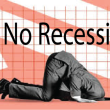by Joseph V. Amato, President and Chief Investment Officer—Equities, Neuberger Berman
Many market commentators, including us, came into 2024 noting that electoral politics was likely to be a key theme in a year in which half the world’s adult population was going to the polls.
Few predicted just how many surprises there would be, however. Fewer still would have forecast such high political volatility being accompanied by such modest market volatility. What explains this disconnect? And should investors brace for a change?
Election Surprises—and an Anti-Incumbency Theme
There have been election surprises in all corners of the world this year. But if we set aside the landslide reelection of the left in Mexico, behind these surprises has been an anti-incumbency theme likely driven, in our view, by high inflation. While financial markets look forward and see the trend lower in inflation, consumers see that a basket of groceries costs one third more than a few years ago.
Even so, setting Mexico aside again, it is also the case that most of these electoral surprises have been neutral or even pro-market.
The Narendra Modi juggernaut lost its parliamentary majority in India, after opinion polls and even exit polls had suggested a big victory—but the result is not perceived to be a threat to the country’s secular growth outlook. In South Africa, the African National Congress lost its post-apartheid majority for the first time, but turned away from left-wing splinter parties to enter a coalition with the centrist Democratic Alliance. In the U.K., the scale of the Conservatives’ defeat was historic, but the Labour party’s big majority has been widely greeted as a return to more stable and centrist government.
Then came a series of curveballs from France. Last weekend’s defeat for the French hard-right party caught almost everyone off guard. As Patrick Barbe and Ugo Lancioni presciently observed a month ago, “The [Rassemblement National party’s] electoral success at the European level is no guarantee of similar success at the national level, where the stakes are perceived to be higher.”
The past month has hardly been a ringing endorsement of incumbent President Emmanuel Macron’s party, and we believe the lack of parliamentary consensus raises longer-term challenges, but the immediate threat to France’s fiscal stability has lifted. French and Italian bond spreads are wider than they were five weeks ago and the French stock market has faltered, but broader European stocks and credit spreads have been resilient.
High Economic Stakes
Can we expect something similar in the lead-up to the U.S. vote in November?
This will involve two parties and two presidential candidates with contrasting policies in four key areas for the economy and financial markets: taxes, regulation, immigration and trade. Much could change before November—as I write, President Joe Biden is under increasing pressure to bow out of the race—but here is how we are thinking about the contrasts of the two candidates’ key economic positions.
On taxes, the cuts that Donald Trump enacted in 2017 are set to expire at the end of 2025. If he wins the election, he is likely to extend or possibly increase them, in our view. By contrast, in a Biden second term, the 2017 tax cuts will likely expire for the wealthiest taxpayers and be extended for those on moderate incomes ($400,000 and below). Trump’s tax policies could be positive for stock markets and growth, while posing risks to bond markets by feeding inflation and raising the question of debt sustainability. It is hard to see how they would not materially increase fiscal deficits, especially in combination with his proposed hike in defense spending, and despite his stated plans to cut other government programs (excluding entitlement programs).
On regulation, we think a Trump administration would return to the laissez-faire agenda of his first term, with the added impetus of recent Supreme Court rulings that have curtailed regulators’ capacity to interpret legislation. We believe a more predictable regulatory environment would increase business confidence, undermined by some of the recent mercurial agency rulings under the Biden administration, and lead to more M&A activity.
Both candidates now talk tough on immigration, but we believe it is likely that a Trump government would act tougher—and again, this could put renewed upward pressure on the labor market, wages and inflation.
And on trade and tariffs, we see the clearest signal of all that Trump would double down on his first-term policies. To put that in perspective, U.S. import tariffs have been between 0.3% and 0.5% of GDP for the last century, with the peak in the 1930s and a modest rise during Trump’s first term; but Trump’s current proposals would raise that to between 1% and 2% of GDP. In our view, this would also further escalate global economic conflict.
More broadly, a new Trump term would likely bring a flurry of change and activity, whereas a second Biden term is more likely to see a more predictable consolidation of first-term legislative initiatives.
These seem like high economic stakes, with global implications. So, why don’t markets seem to care?
Volatile Moment
It is possible that investors are looking past the headlines to assess the more likely outcomes. Trump’s tariff proposals look disruptive, but perhaps they are just a negotiator’s opening gambit, designed to offer room for movement. Whatever the case, they are unlikely to be enforced before the end of next year.
Furthermore, while there is scope for the executive to act on tariffs and regulation, tax and immigration policy would require legislation, which in turn depends on what happens in Congressional elections. (We anticipate either a Republican sweep of the White House, House and Senate or a divided government of Democratic White House, Democratic House and Republican Senate).
Given all these uncertainties, investors may simply consider it too early to position. As Erik Knutzen observed a few weeks ago, and Tim Creedon and Raheel Siddiqui have reiterated, election-year equity market volatility tends to pick up only after September.
That seems intuitive to us. France demonstrated how quickly things can change in a single week. In the U.S., Trump picked up 34 felony convictions on May 30, and President Joe Biden subsequently closed the gap in opinion polls; but Biden’s debate performance four weeks later arrested that momentum and has put his candidacy in doubt. A new candidate would completely change the nature of the campaign; but even something as mundane as continued disinflation and a September rate cut could tip the balance.
In other words, what I write here on Friday could be out of date by the time you are reading it on Monday—let alone by November. It is a paradox, which is perhaps why it feels a little uncanny, like the calm before a storm: We believe market volatility is low because of high electoral uncertainty and volatility, not despite it.
That is why investors shouldn’t let today’s calm markets persuade them that this is an inconsequential election, in our view. It is consequential. When market participants finally do begin to position for the outcome, it could be a highly volatile moment.
*****
In Case You Missed It
- China Consumer Price Index: +0.20% year-over-year in June
- China Producer Price Index: -0.80% year-over-year in June
- U.S. Consumer Price Index: +3.0% year-over-year, -0.10% month-over-month (core consumer price index +3.3% year-over year, +0.10% month-over-month) in June
- U.S. Producer Price Index: +2.6% year-over-year, +0.20% month-over-month (core consumer price index +3.0% year-over year, +0.40% month-over-month) in June
- University of Michigan Consumer Sentiment: -2.2 to 66.0; one-year inflation expectations -0.1% to 2.9% in July
What to Watch For
-
- Sunday, July 14:
- China GDP
- Tuesday, July 16:
- U.S. Retail Sales
- NAHB Housing Market Index
- Wednesday, July 17:
- U.S. Building Permits
- U.S. Housing Starts
- Thursday, July 18:
- European Central Bank Policy Meeting
- Japan Consumer Price Index
- Sunday, July 14:
Investment Strategy Team
For Available Investments and Market InsightsSelect Your Location














